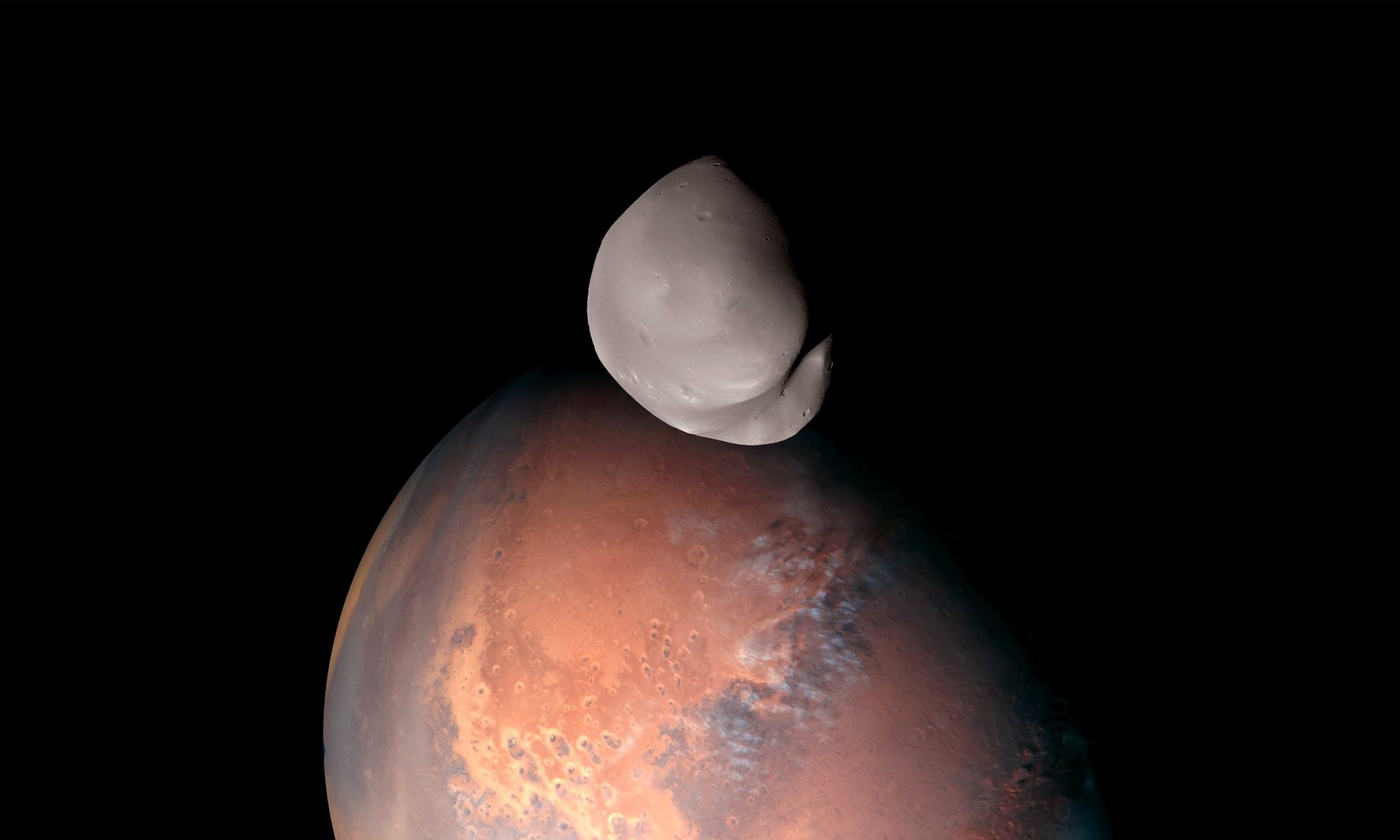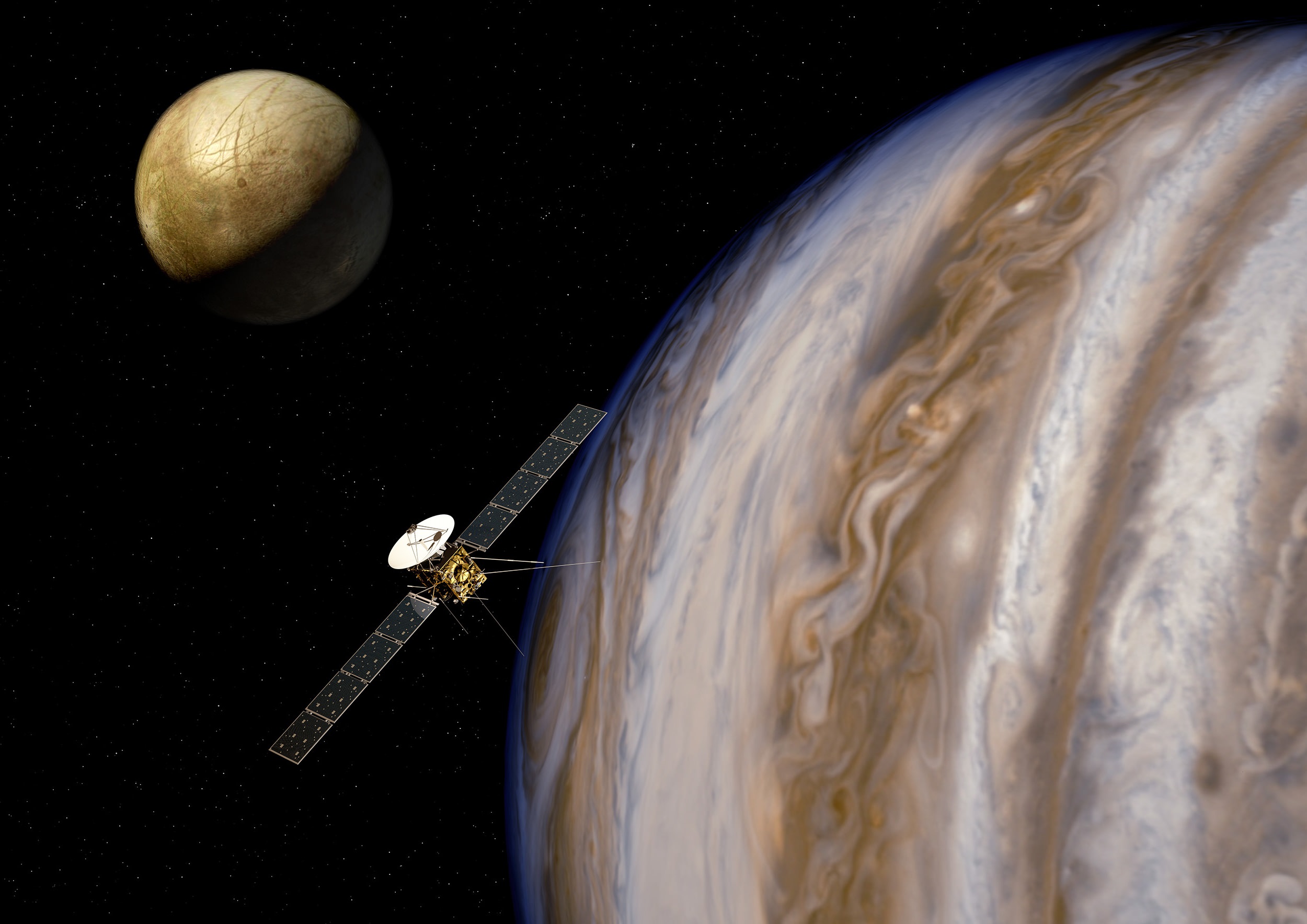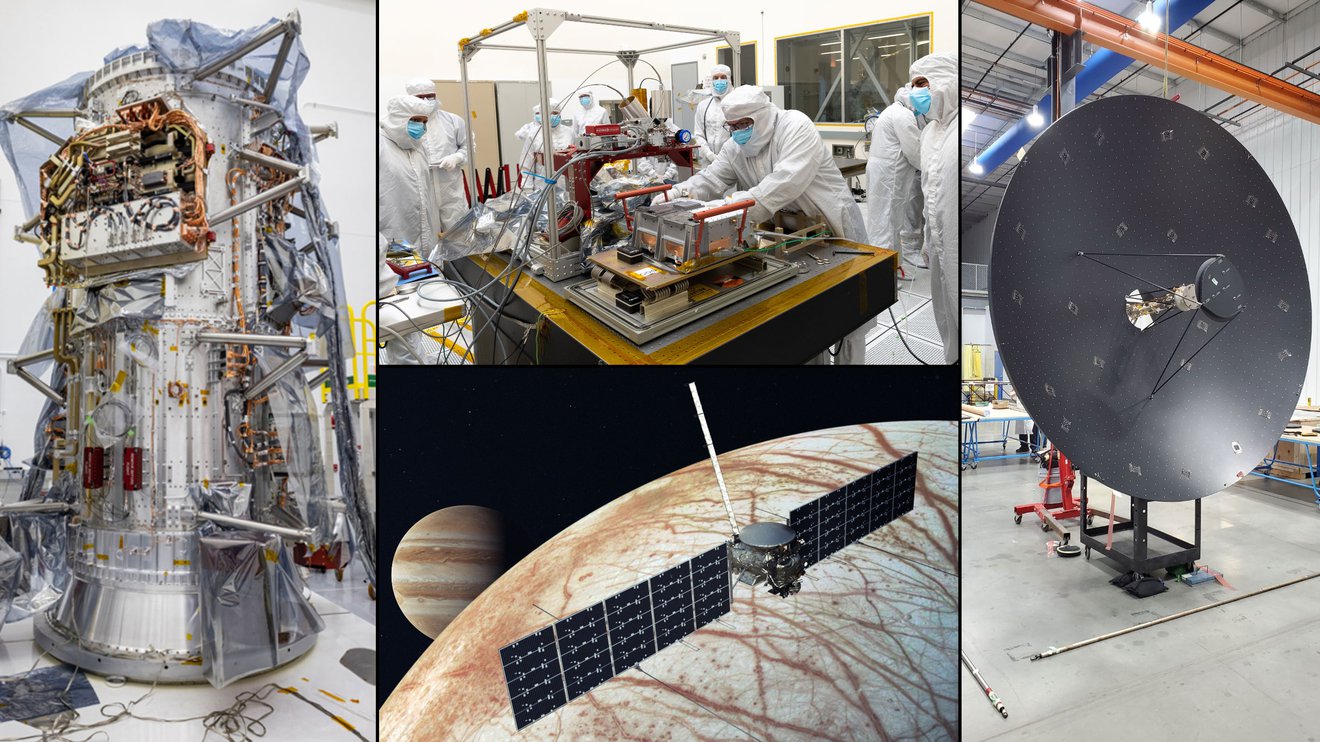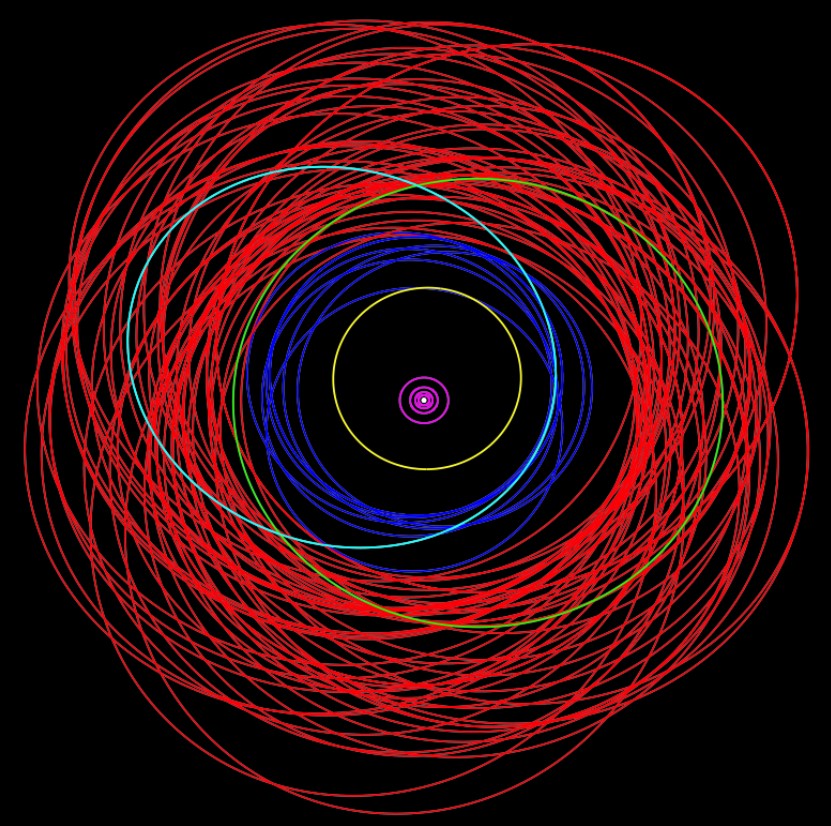Earth and Mars are the only two rocky planets in the solar system to have moons. Based on lunar rock samples and computer simulations, we are fairly certain that our Moon is the result of an early collision between Earth and a Mars-sized protoplanet called Theia. Since we don’t have rock samples from either Martian moon, the origins of Deimos and Phobos are less clear. There are two popular models, but new computer simulations point to a compromise solution.
Continue reading “New Supercomputer Simulation Explains How Mars Got Its Moons”New High-Resolution Photos of Deimos From the Hope Mission

We’ve seen our share of photos of Mars from orbit and the surface, but what about its moons? The United Arab Emirates Hope orbital mission to Mars sent home new beautiful high-resolution images of the Red Planet’s moon Deimos when it flew within 100 km of the moon last month. This is the closest any spacecraft has been to Deimos in almost 50 years.
In the photos, the science team says that their images of Deimos help provide evidence that the moon wasn’t a captured asteroid but came from Mars itself during an impact in the ancient past, much like Earth’s Moon.
Continue reading “New High-Resolution Photos of Deimos From the Hope Mission”If Planet 9 has Moons, Would That Help Us Find It?

Planet 9 continues to remain elusive. This potential super-Earth-sized object in the outer Solar System is only hypothetical, as something out there appears to be gravitationally influencing several Kuiper Belt Objects into unusual orbits. Whatever or wherever it may be, Planet 9 has yet to be found, despite several different hypotheses and numerous observational searches.
But what if Planet 9 has moons? Could they help us find it? A new paper speculates that any moons orbiting the theoretical planet could provide indirect clues to the location of Planet 9, while revealing some basic properties of this mysterious object.
Continue reading “If Planet 9 has Moons, Would That Help Us Find It?”New Discoveries Puts Jupiter at 92 Known Moons
The moon hunter strikes again.
A team of astronomers led by Scott Sheppard of the Carnegie Institution has found and confirmed 12 new moons orbiting Jupiter, bringing the total of moons at the giant planet to 92. The new moons were quietly announced on the International Astronomical Union’s Minor Planet Center website last week, and the new discoveries puts Jupiter in the lead in a recent back-and-forth moon battle with Saturn.
Jupiter was solidly in the lead with Sheppard and team’s announcement of 12 new moons back in 2018, but then in 2019, Sheppard and colleagues found a whopping 20 new moons orbiting Saturn, bringing the ringed planet’s total number of moons to 82. But now this latest addition moves Jupiter back in the lead.
With Sheppard around, we may never know the final count.
Continue reading “New Discoveries Puts Jupiter at 92 Known Moons”Scientists Investigate Potential Regolith Origin on Uranus’ Moon, Miranda
In a recent study published in The Planetary Science Journal, a pair of researchers led by The Carl Sagan Center at the SETI Institute in California investigated the potential origin for the thick regolith deposits on Uranus’ moon, Miranda. The purpose of this study was to determine Miranda’s internal structure, most notably its interior heat, which could help determine if Miranda harbors—or ever harbored—an internal ocean.
Continue reading “Scientists Investigate Potential Regolith Origin on Uranus’ Moon, Miranda”What is the Maximum Number of Moons that Earth Could Have?
In a recent study published in Earth and Planetary Astrophysics, a team of researchers from the University of Texas at Arlington, Valdosta State University, Georgia Institute of Technology, and the National Radio Astronomy Observatory estimated how many moons could theoretically orbit the Earth while maintaining present conditions such as orbital stability. This study opens the potential for better understanding planetary formation processes which could also be applied to identifying exomoons possibly orbiting Earth-like exoplanets, as well.
Continue reading “What is the Maximum Number of Moons that Earth Could Have?”ESA's Juice Mission is Fully Integrated and Ready for Testing. Soon it'll fly to Space on a Mission to Jupiter's Moons

Now less than one year until the projected launch date, ESA’s JUICE mission is in the final phases of development. The JUpiter ICy moons Explorer (JUICE) is now fully built with all ten instruments integrated into the spacecraft bus. Next comes all-up testing in a full flight configuration.
Launch is currently scheduled for April of 2023, with the mission slated to conduct detailed investigations of Jupiter and its system of moons, focusing on Europa, Callisto and especially Ganymede.
Continue reading “ESA's Juice Mission is Fully Integrated and Ready for Testing. Soon it'll fly to Space on a Mission to Jupiter's Moons”The Europa Clipper is Coming Together, Launching in 2024

Who is excited to send a spacecraft to Europa? Every person I’ve talked to who is even remotely interested in planetary exploration is incredibly enthusiastic about the upcoming Europa Clipper mission to explore Jupiter’s icy moon. With strong evidence of a subsurface liquid ocean, Europa is considered by many to be the most likely place in our Solar System – besides Earth — which might harbor life. The many mysteries about this moon make it a compelling place to explore.
Continue reading “The Europa Clipper is Coming Together, Launching in 2024”A Moon Might Have Been Found Orbiting an Exoplanet

In the past three decades, the field of extrasolar planet studies has advanced by leaps and bounds. To date, 4,903 extrasolar planets have been confirmed in 3,677 planetary systems, with another 8,414 candidates awaiting confirmation. The diverse nature of these planets, ranging from Super-Jupiters and Super-Earths to Mini-Neptunes and Water Worlds, has raised many questions about the nature of planet formation and evolution. A rather important question is the role and commonality of natural satellites, aka. “exomoons.”
Given the number of moons in the Solar System, it is entirely reasonable to assume that moons are ubiquitous in our galaxy. Unfortunately, despite thousands of know exoplanets, there are still no confirmed exomoons available for study. But thanks to Columbia University’s Professor David Kipping and an international team of astronomers, that may have changed. In a recent NASA-supported study, Kipping and his colleagues report on the possible discovery of an exomoon they found while examining data from the Kepler Space Telescope.
Continue reading “A Moon Might Have Been Found Orbiting an Exoplanet”Why Visit Just one Moon When you Could Explore Them all?
The Solar System’s moons are intriguing objects for exploration. Especially moons like Europa and Enceladus. Their subsurface oceans make them primary targets in the search for life.
But why not send one spacecraft to visit several moons? NASA’s about to launch its Lucy mission which will visit 8 separate asteroids. Could the same be done for a mission to multiple moons?
For a spacecraft to do that, it would have to do a little dance with the notorious three-body problem, which makes a stubborn partner. A new study presents a possible way to do that.
Continue reading “Why Visit Just one Moon When you Could Explore Them all?”




